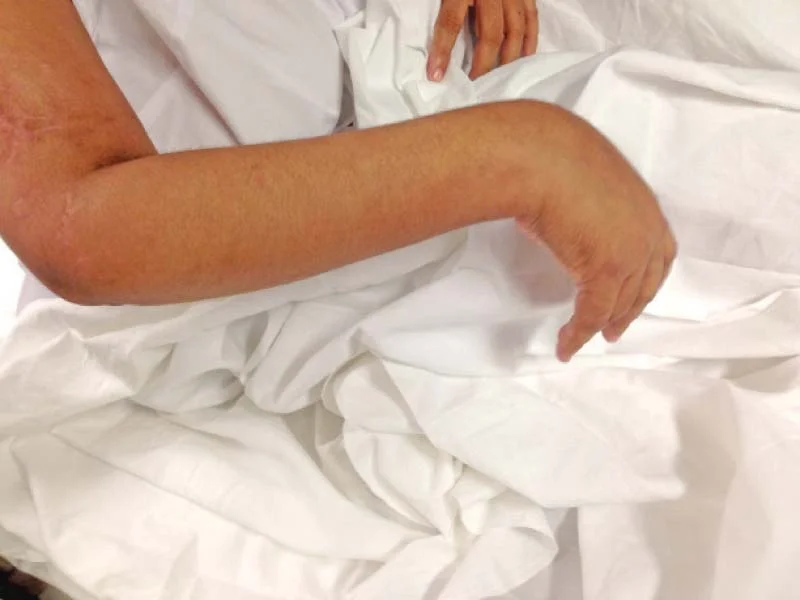Radial nerve injury is caused by physical trauma, infection, or exposure to toxins. This injury can lead to radial neuropathy or radial nerve palsy. Wrist drop is the most common presentation of suffering from radial nerve palsy. Your radial nerve runs from the armpit down the back of your arm to the hand. Surgery for radial nerve injury may include nerve repair, nerve graft, or nerve decompression.
Radial Nerve injury symptoms
Radial injury often causes numbness and tingling or burning pain. It can also be painless. The condition may cause weakness or difficulty moving your wrist, hand, or fingers. Exact symptoms depend on the location and type of injury.

Causes of radial nerve injury
Fracturing the humerus (a bone in the upper arm)
Sleeping with the upper arm in an awkward position
Pressure from leaning the arm over the back of a chair
Using crutches improperly
Falling on or receiving a blow to the arm
Long-term constriction of the wrist
A nerve laceration usually requires surgical repair.
Radial Nerve injury treatment options
Radial Nerve injury treatment aims to relieve symptoms while maintaining movement of the wrist and hand. Depending on the cause of injury, your healthcare provider will determine the best treatment option. There are several different first-line treatment options available. These include:
Analgesic or anti-inflammatory medications
Anti-seizure medications or tricyclic antidepressants (prescribed to treat pain)
Steroid injections
Anesthetic creams or patches
Braces or splints
Physical therapy to help build and maintain muscle strength
Massage
Acupuncture

Radial Nerve Injury Surgery
Most people with a radial nerve injury will recover within three months of starting treatment if the nerve is not torn or lacerated. But others may need to undergo surgery. The goal of surgery is to repair any damage to the nerve. If the radial nerve is entrapped, surgery can help relieve pressure on the nerve. Surgery may also be used to remove a benign tumor from the radial nerve. After surgery, you will need to wear a brace or splint to allow the injury or tendon transfer to heal. Your doctor will refer you to a physical therapist for rehabilitation to restore your range of motion and strength.
Conclusion
In conclusion, Radial Nerve Injury & Repair is a significant area in medical science. Radial nerve injury, which can be caused by physical trauma, infection, or exposure to toxins, often leads to radial neuropathy, also known as radial nerve palsy. This condition can cause symptoms such as numbness, tingling, and difficulty moving the wrist, hand, or fingers. The severity of the injury can range from neurapraxia, a minor injury, to neurotmesis, the most severe form of nerve damage. Treatment options vary depending on the cause and severity of the damage and can include wrist splints, over-the-counter pain medication, physical therapy, or surgery. In many cases, radial nerve injuries can heal on their own, but some require surgical treatment. Most people with a radial nerve injury will recover within three months of starting treatment if the nerve is not torn or lacerated. However, some cases ultimately require surgery.